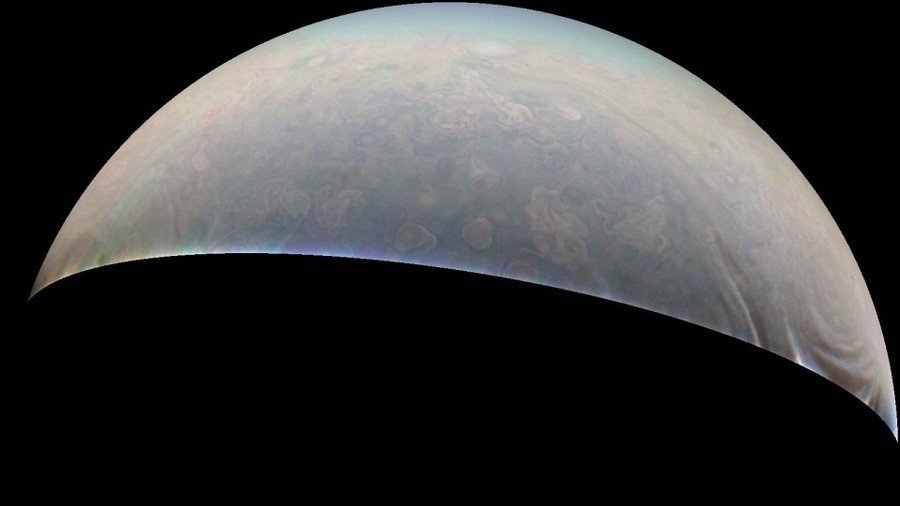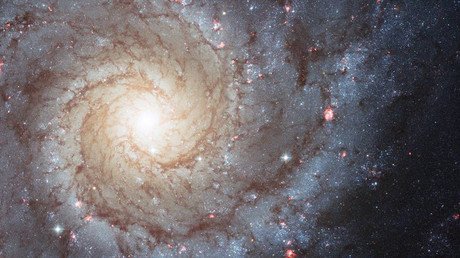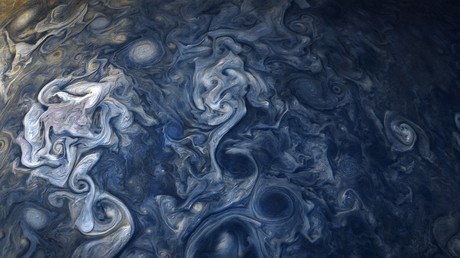Violent cyclones pictured in latest trove of NASA Jupiter images

NASA has released a trove of raw images taken by the Juno space probe during its latest Jupiter flyby.
The spacecraft completed its 11th flyby over Jupiter’s clouds on April 1st, capturing stunning high-definition images of the gas giant and collecting important data in the process. The images show the giant planet’s mesmerizing atmosphere shrouded in a blanket of gas, as well as an anticyclonic oval in the north region of its tropical zone.
Massive cyclones surround Jupiter’s north and south poles and the enduring atmospheric features caused are unlike anything else in our solar system.
The northern cyclone is almost as wide as the distance between Naples, Italy and New York City, and the southern ones are even larger. The cyclone’s violent winds can reach speeds of up to 220 mph.
READ MORE: NASA funds plans to put robot bees on Mars
“Prior to Juno we did not know what the weather was like near Jupiter’s poles. Now, we have been able to observe the polar weather up-close every two months,” said Alberto Adriani, Juno co-investigator from the Institute for Space Astrophysics and Planetology.
New #JunoCam raw images from my latest #Jupiter flyby are available now. Download, process + share https://t.co/ijHwy72xXp#citizensciencepic.twitter.com/aCZdf8NKeI
— NASA's Juno Mission (@NASAJuno) April 2, 2018
Launched on August 5, 2011, Juno spent five years traveling to its destination and has logged over 200 million kilometers since entering Jupiter’s orbit.The craft has just one more close flyby to complete before its mission officially concludes in July; however, NASA may extend the mission.
Eventually, Juno will suffer a similar, fiery fate as its cousin Cassini, which plummeted into Saturn’s atmosphere on September 15, 2017.
Think your friends would be interested? Share this story!














